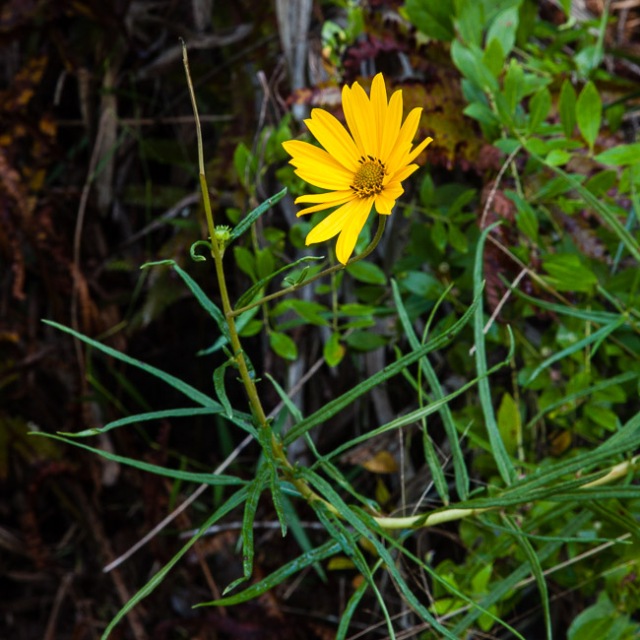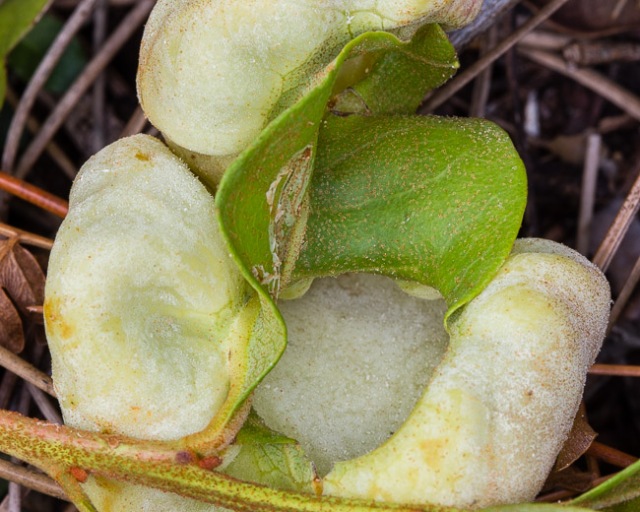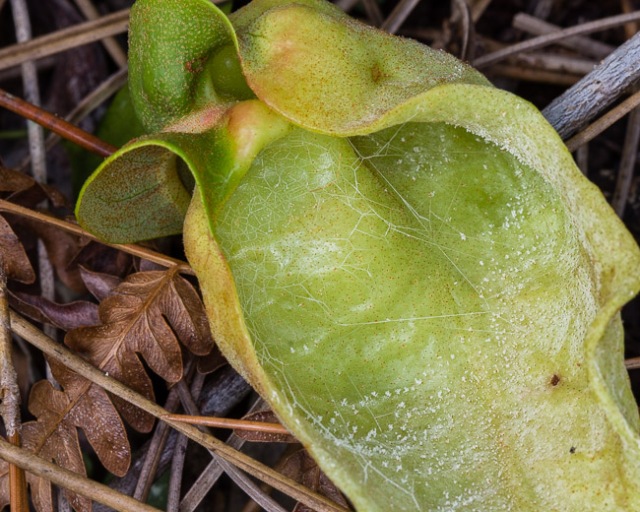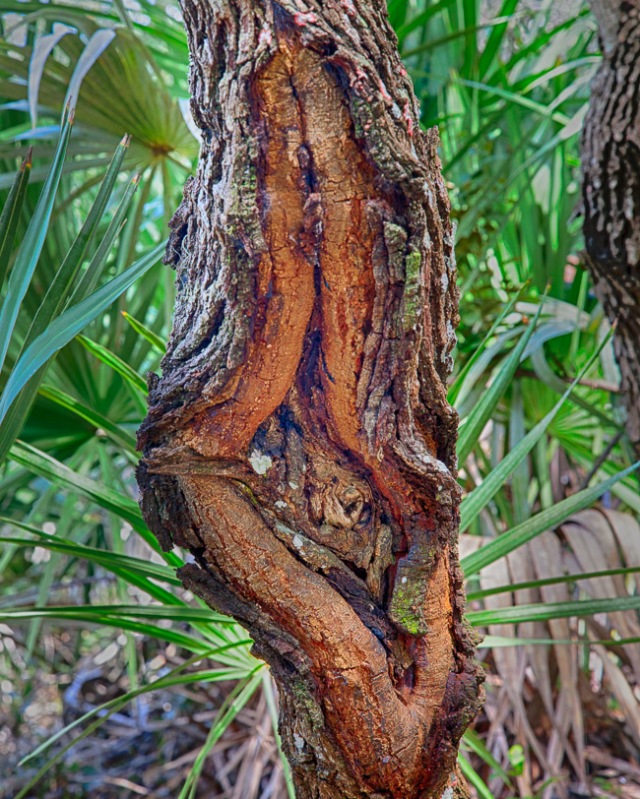Add another plant species to the list, some Swamp Sunflowers are out in bloom. Big beautiful flowers that have really thin opposite leaves.
But what really grabbed my attention was the fungi starting to grow on the leaves of the Staggerbush. Back in April, I posted a picture of what I thought was a gall on a Staggerbush leaf.
Fortunately, Rick Walker spotted my blunder and thus I learned that it is actually a fungus causing the growth.
The pathogen belongs to the Exobasidiaceae, a family which consists of 5 genera and 56 species. The species have a wide distribution, especially in temperate parts of the world. They grow on the leaves of plants, especially those in the Ericaceae (Heath family). Generally one species of the fungi is associated with on species of plant which may be why they show up on the Staggerbush and not on Fetterbush.
If you look close you can see the little thread-like micorrhiza on the surface. So it was with some interest that I spotted this fungus starting to grow on the leaves of another Staggerbush. You can see the leaf with the fungi starting to surround it.
The threads of the micorrhiza remind me of a spider starting to weave a web.
This is the view from the other side of the leaf.
It’s always interesting to see some of the weird and interesting shapes we can find in trees. I’m amazed that this oak could survive the damage it sustained when the limb broke away.






[…] Staggerbush grows only in Florida and nearby states. Often on its leaves appear bizarre growths about the size and shape of a mutated human ear, and bright pink. Very eye-catching. Looks like a gall, but, no, response to a fungal infection. To see these, go for a walk, preferably along the Trail to the River. CLICK […]
John, I put a copy of one of your fungus pix into the new printing of the landscape plants book.